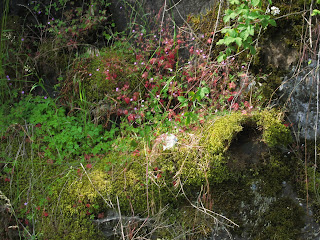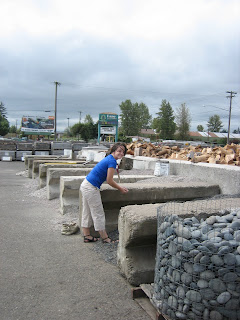Custom Sheer Curtains
-
[image: Custom-Sheer-Curtains]
If you are looking for *Custom Sheer Curtains * you've come to the right
place. We have 30 images about Custom Sheer Curtain...
Tuesday, July 20, 2010
Saturday, July 17, 2010
Friday, July 16, 2010
[Mid-Term] "Inducing Transpiration" by Jesse Crupper
Evocation
This project was born out of a response to a list serve email that I received from the Northwest Ecobuilders Guild. The original post showed beautiful imagery of the newest, "greenest" walls, each more breathtaking than the last. A few days later, another email from the Guild entitled "green walls are NOT 'green.' " The premise being that these walls require so much energy, much more than being grown on the ground and more than they will offset in reduced cooling/heating loads. These arguments are not new and are fairly well documented. The surprise to me came from the signature at the bottom, a colleague of mine from the landscape department, whom I had worked with in the Ecological Design Center. A challenge from a fellow student gave me the pretext for my final product this summer, a passive living wall.
Transpiration
The most typical and successful models for a green wall system are based on hydroponics. A nutrient rich water solution is pumped through the system and dripped or misted directly on the roots, requiring no conventional soil medium for their growth. This water is then collected at the bottom and recirculated. After thoroughly researching these methods I came to the conclusion that I would either need to collect water on the roof, and slowly let it drip down the wall, or I would need to make the water move against gravity. Given our site, a small trailer, I quickly realized that the former is not an option.
Soon I was reliving fourth grade, watching water travel up a paper towel, moving water from one glass to another using capillary action. Later, I was in eighth grade, relearning how a tree works. Transpiration is a powerful form of evaporation. The tree starts water up with capillary action, meanwhile the leaves allow water to evaporate causing a negative pressure to suck water up. An oak tree can create a pressure of 75 ppi, and now I must emulate it.
Experimentation
Leading up to this point, I have been conducting material experiments to try and figure out the best way to move water up a wall. The basic idea is that an absorbent fabric will wick water up from a basin. At certain points up the wall are pockets containing the plant growing medium, a mixture of perlite, slow-release fertilizer, and a super-absorbent polymer. The super-absorbent polymer serves 2 purposes. First it creates a reservoir for the plant living in it, and secondly it allows the fabric to use it as a step. Gravity limits the height a liquid will move up through capillary action, so this creates a new base point for the fabric at each level. Further, the plant pulls water up creating even more incentive for the water to travel up the wall.




Kitchen turned Lab









Rendered on site
Although not the proper location, this rendering tries to put things in perspective
Moving on from this point, I will continue to experiment with the stepping method for water, described earlier. When the system is proven, I would like to then explore how to push the wall in several directions. First, literally giving the wall more shape, curving it out from the wall, or potentially into it. Secondly, the materials used this summer are all within the means of a college graduate student, so some theoretical research into more advanced materials could have this wall reaching for the sky!
Thursday, July 15, 2010
[Mid-Term] "Moss Wall" by Michael LeClare and Molly McGowen

The following are a series of images of naturally created and intentionally cultivated moss walls. They represent an array of possibilities and potential that sparked our interests early on in the conceptual development phase. We are interested in the application of moss walls both for interior as well as exterior environments, both as a visual design feature and a tactile element that encourages interaction with the spaces we inhabit. In addition to being aesthetically pleasing, we intend to explore possible subsequent benefits from the micro-climates and cooling effects created by moss cultivation within our living environments.
















To begin the project we used the natural environment as our catalyst. We embarked on a walking tour of The University of Oregon campus and outlying areas collecting moss that we found growing in the cool shadows. We found the most variety of species growing on the north stone face of Hendricks Hill along Franklin Boulevard. We also found several ferns and flowers that were growing within the moss with almost no soil. Our intent is to identify the different type of mosses and determine which would be the most suitable for propagation within a constructed environment. We also noted the coloration, size, and texture each species offered and their potential to mosaic together as in some of the precedents we had looked at earlier. We took the samples back to studio and let portions go dormant and dry while other portions we kept in cups with water to see how each species looked in both conditions. Eventually, the moss species that we determine to be the most suitable for our moss wall project will be put in a blender with buttermilk to begin the propagation process and applied like a paint to test-rocks for display.















After gathering our moss, we went to Willamette Graystone and Lane Forest Products to collect stone samples for mediums on which to grow the moss. We collected a variety of natural and constructed stone types from bricks and pavers to river rocks and slate to see what surfaces will grow moss and which, of them, work the best.











With all of our materials gathered we had to consider how we were going to mount and display our samples. We chose to create form-work that would fit in between the ribs of the storage container were we will eventually be displaying our work. Our plan was to make five different forms, with each of them being divided into four separate horizontal chambers. Each chamber will be filled with concrete and embedded with the same stone sample. However, each horizontal portion will be painted with a different species of moss sample. In this way we will be able to see how different moss species react to different types of stone as a growing medium. We used The University of Oregon Craft Center, the AAA Woodshop, and our personal shop space as well as the site itself for construction.
Subscribe to:
Posts (Atom)
































